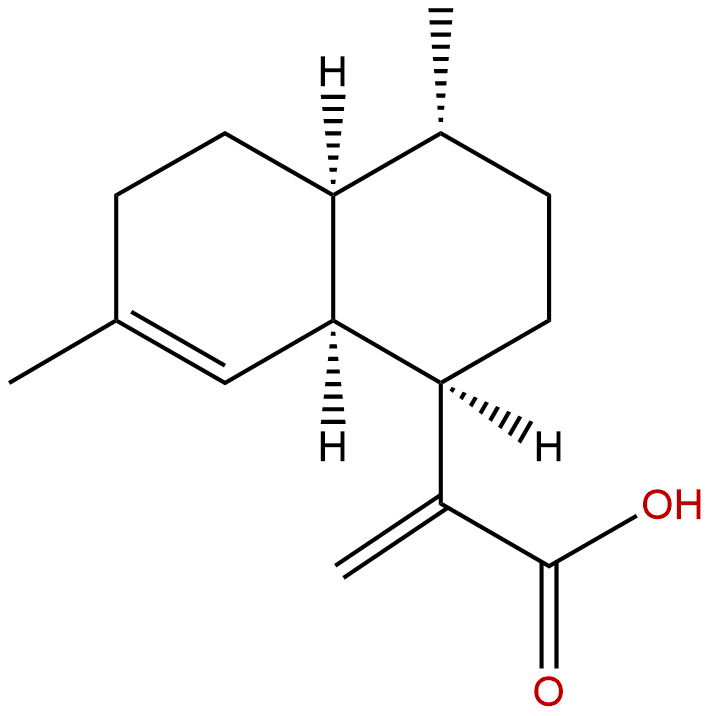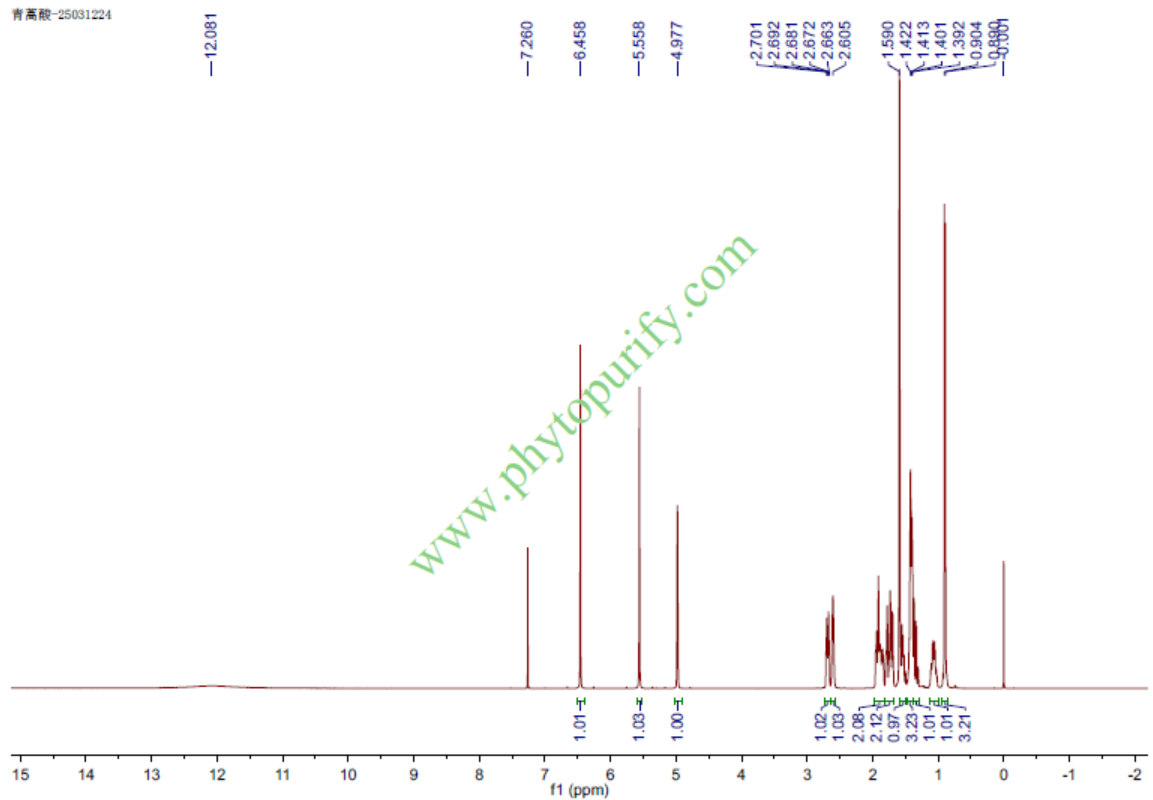
Artemisic acidCAS No.:80286-58-4
|
||||||||||
 |
|
|
||||||||

| Catalogue No.: | BP0196 |
| Formula: | C15H22O2 |
| Mol Weight: | 234.339 |
Product name: Artemisic acid
Synonym name: 4,11(13)-Cadinadien-12-oic acid; 4,11(13)-Amorphadien-12-oic acid; Arteannuic acid; Artemisinic acid
Catalogue No.: BP0196
Cas No.: 80286-58-4
Formula: C15H22O2
Mol Weight: 234.339
Botanical Source: Artemisia annua
Physical Description: Powder
Type of Compound: Sesquiterpenoids
Purity: 95%~99%
Analysis Method: HPLC-DAD or/and HPLC-ELSD
Identification Method: Mass, NMR
Packing: Brown vial or HDPE plastic bottle
Storage: Store in a well closed container, protected from air and light. Put into refrigerate or freeze for long term storage.
Whenever possible, you should prepare and use solutions on the same day. However, if you need to make up stock solutions in advance, we recommend that you store the solution as aliquots in tightly sealed vials at -20℃. Generally, these will be useable for up to two weeks.
The product could be supplied from milligrams to grams, up to kilograms
Inquire for bulk scale.
Descriptions:
Artemisinic acid, is the immediate precursor of the semi-synthesis artemisinin, could be a cost-effective, environmentally friendly, high-quality and reliable source of artemisinin;and artemisinin is highly effective against multi-drug-resistant Plasmodium spp. [1]
Artemisinic acid was studied as a novel elicitor to enhance the yield of terpenoid indole alkaloids, artemisinic acid can up-regulate the transcriptions of tryptophan decarboxylase, geraniol 10-hydroxylase, tabersonine 16-hydroxylase and deacetoxyvindoline 4-hydroxylase.[2]
Artemisinic acid is a regulator of adipocyte differentiation and C/EBP δ expression, it can inhibit adipogenic differentiation of hAMSCs by occurs primarily through reduced expression of δ, which is mediated by the inhibition of and suggest that artemisinic acid may be used as a complementary treatment option for associated with metabolic syndrome.[3]
References:
[1] Ro DK; Paradise EM, Ouellet M; Fisher KJ, Newman KL, et al . Nature, 2006, 440(440):940-3.
[2] Liu J, Zhu J, Tang L, et al. World J Microb Biot, 2013, 30(1):175-80.
[3] Lee J, Kim M, Lee J, et al. J Cell Biochem, 2012, 113(7):2488-99.
[4] Sun J C, Zeng J L, Zhao B, et al. Nat Prod Res Develop, 2010, 22(5):845-6.
HPLC of Artemisic acid

HNMR of Artemisic acid
